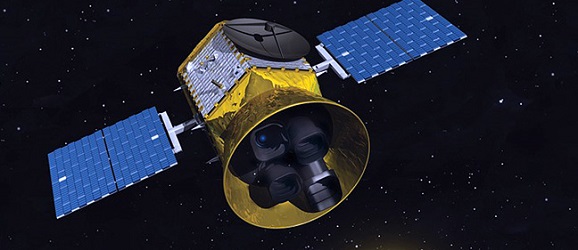NASA And MIT Team Up To Search For Earthlike Planets
This article is more than 2 years old
 At the end of last year, astronomers said they believed an Earthlike planet would be discovered in 2013. Lo and behold, it’s 2013. As far as most exoplanets go, they’ve found big and small, with some Earthlike-like-like planets out there. But nothing quite so unique as our big blue marble.
At the end of last year, astronomers said they believed an Earthlike planet would be discovered in 2013. Lo and behold, it’s 2013. As far as most exoplanets go, they’ve found big and small, with some Earthlike-like-like planets out there. But nothing quite so unique as our big blue marble.
The Kepler observatory, launched in 2009, will soon be completely outdated, thanks to a partnership between NASA and MIT that will give us TESS, or the Transiting Exoplanet Survey Satellite, which will do the same thing that Kepler has been doing — namely searching for planets by detecting dips in a star’s brightness as the orbiting body crosses between it and the observer. The difference between the two is simple: TESS is going to be searching about 400 times as much of the sky as Kepler does. It will be here to survey the entire sky and chew bubble gum, and it’s all out of bubble gum. Also, satellites can’t chew bubblegum.
“It will identify thousands of new planets orbiting a broad range of stellar types, and with widely varying distances from their host star,” said the project’s principal investigator George Ricker, a senior research scientist at MIT’s Kavli Institute for Astrophysics and Space Research. We all grew up with eight or nine planets to worry about memorizing mnemonically, but our kids’ kids are going to have thousands. The plastic glow-in-the-dark wall stick-on industry is going to explode!
TESS was recently selected as a winning project in NASA’s Astrophysics Explorer Program, and will receive up to $200 million in funding to make its big launch in 2017, just as Kepler’s funding dwindles down to nothing. It will eventually work in a tag team with the James Webb Space Telescope (JWST), which will be launching soon after TESS. The JWST is in it to study the birth and evolution of galaxies and the formation of celestial bodies. Because it’s that powerful.
Incidentally, the other winning project in NASA’s program is the Neutron Star Interior Composition Explorer (NICER), a space station-mounted instrument that will measure the variability of cosmic X-ray sources to explore the states of matter within neutron stars. It will get a cool $55 million. If it should find chocolate in the middle of them, perhaps it would prove the existence of God after all. This God.












